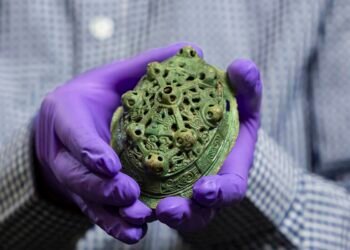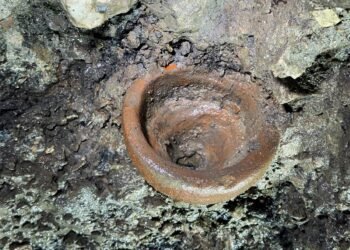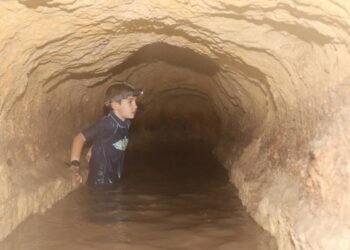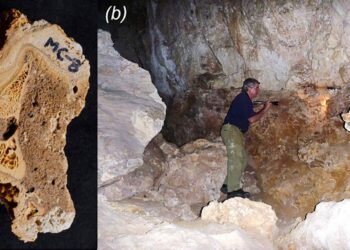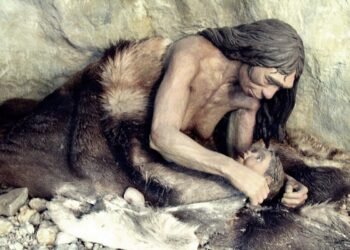Archaeologists from the Israel Antiquities Authority (IAA) have unearthed a rare 2,000-year-old silver half-shekel coin dating back to the First Jewish Revolt against the Roman Empire.
The coin, minted in Jerusalem in the year 66/67 CE., was stumbled upon during the ongoing Judean Desert Survey Project, a collaborative effort between the IAA, the Ministry of Heritage, and the Civil Administration Archaeology Unit in Judea.
The project’s objective is to systematically document archaeological sites and relics in the desert region to prevent looting and to gain a deeper understanding of the area’s historical significance.
The coin was discovered near the entrance of a cave within the Ein Gedi Nature Reserve, an area known for its connection to the ancient Jewish fortress Masada.
One side of the coin is inscribed with the words “The Holy Jerusalem” in ancient Hebrew script, alongside a depiction of three pomegranates. The reverse side features a chalice with the Hebrew letter aleph, symbolizing the first year of the revolt’s outbreak, and the phrase “Half-Shekel,” denoting the coin’s value.
During the First Jewish Revolt (66-70 CE), which marked a significant uprising against Roman rule, Jewish rebels minted their own coins as an act of defiance and a means of establishing an independent economy. These coins bore Jewish symbols and inscriptions, diverging from the customary Roman coinage that often featured images of emperors and animals.
Yaniv David Levy, a numismatic scholar with the IAA, noted, “Coins from the first year of the revolt, such as this one, are rare. During the Second Temple period, Jewish pilgrims used to pay a Temple tax in half-shekel coins. For about two centuries, Tyrian-minted coins, made of fine silver and a status symbol in the region, were used for this contribution. In the course of the revolt, the rebels minted alternative coins inscribed with ‘shekel Israel,’ ‘half-shekel,’ and ‘quarter-shekel.’ It seems that the rituals in the Temple continued during the revolt and these coins were now used by the rebels.”
Amir Ganor, the director of the Judean Desert Survey Project, emphasized the importance of controlled archaeological activities in preserving such historical artifacts. “Finding a silver half-shekel coin from the first year in an organized archaeological project is a rare event in Israel in general, and in the Judean Desert in particular,” Ganor stated. He further highlighted the significance of the survey in preventing valuable artifacts from falling into the hands of antiquity looters and being sold on the black market.
The unique coin serves as tangible evidence of the Jewish rebellion against the Romans, a chapter in history marked by intense struggle and the assertion of cultural identity.



